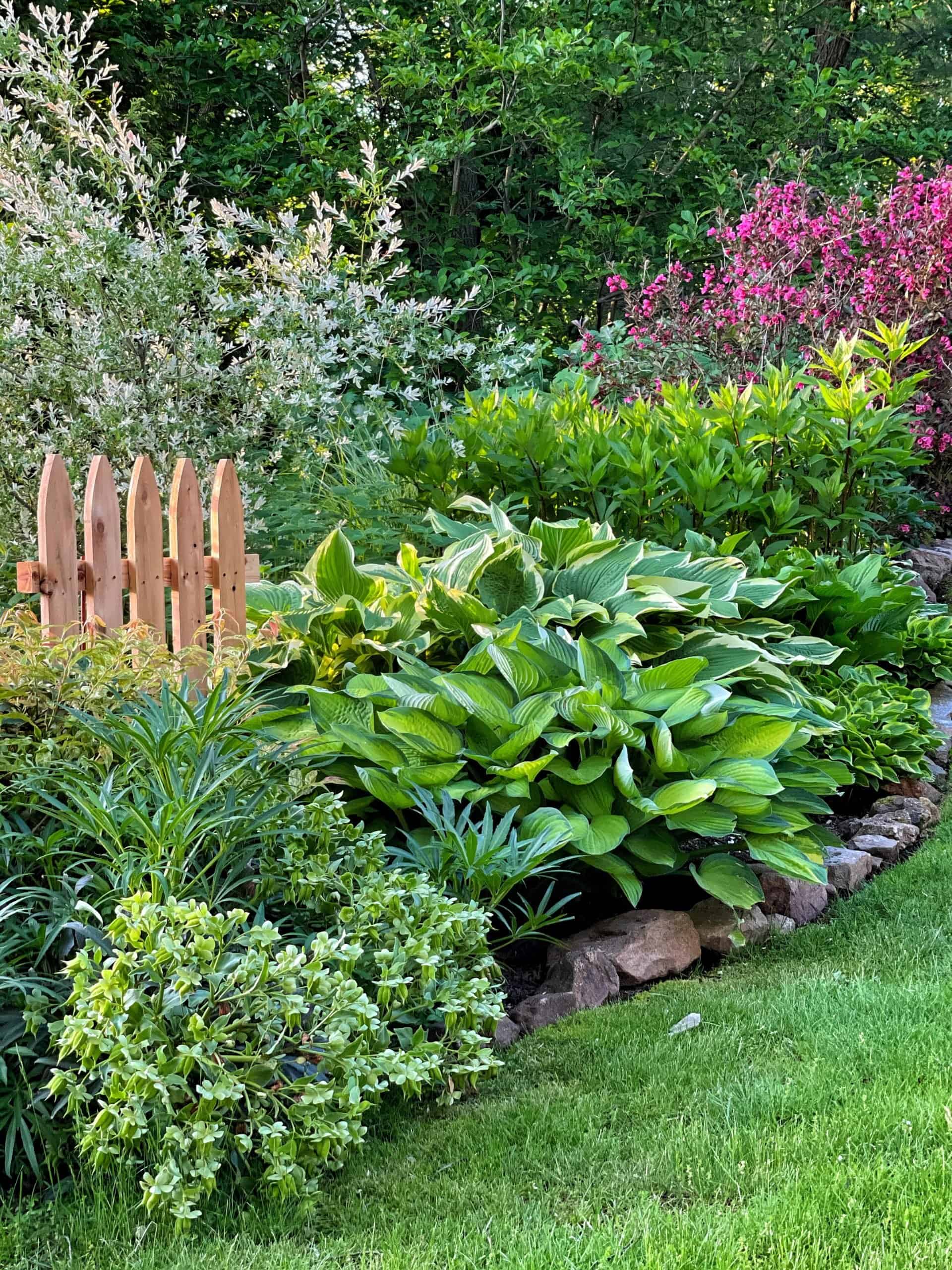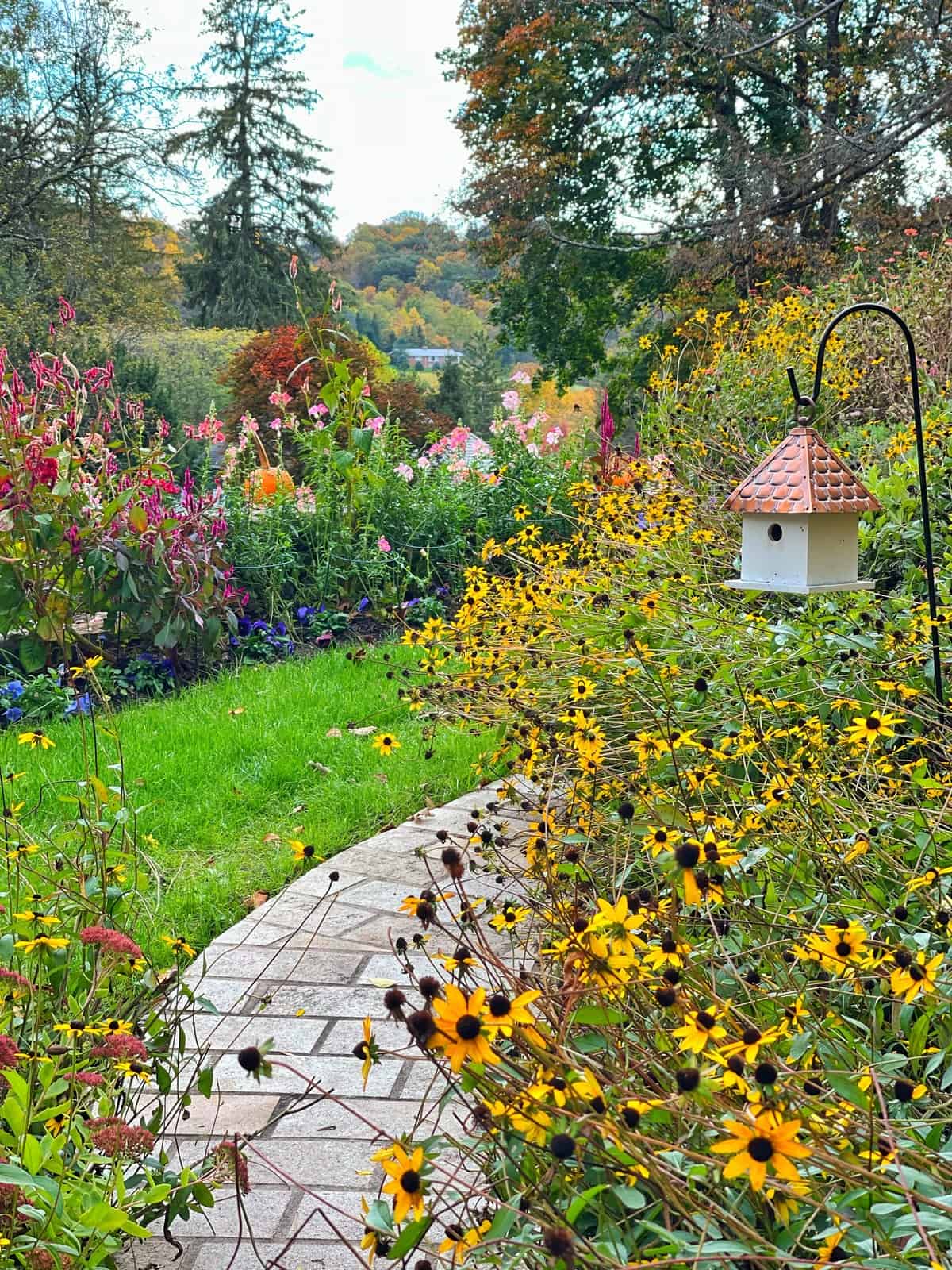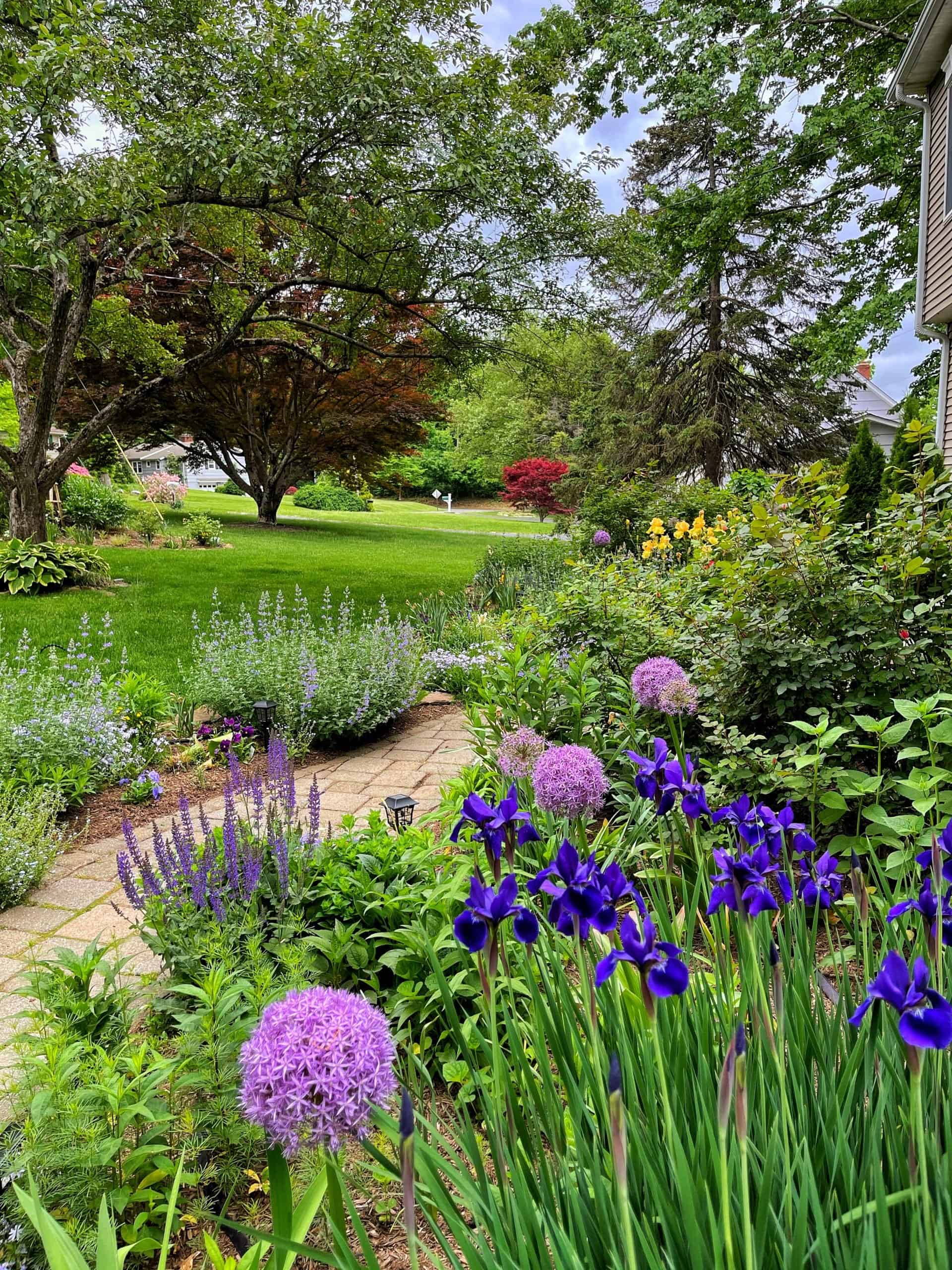Get more blooms and healthier plants. This guide covers why and when to divide, plus step-by-step instructions for a thriving, healthy garden.
Are your perennials looking less vibrant than they used to? Do you wish you had more blooms on your favorite perennials? Dividing perennials is a gardening technique that can help you achieve just that!
Perennials are flowering plants that come back year after year, but over time, they can become overcrowded. Dividing them is a simple process that will rejuvenate your plants, promote more blooms, and even allow you to create new ones!
They need to be divided every few years to keep their vigor. It sounds scarier than it is because the plant actually wants you to do it. Learn why, when, and how to divide perennials with these simple tips!
(Posts on stacyling.com may contain affiliate links. Click HERE for full disclosure.)
About Dividing Perennials
Dividing perennials is an essential gardening practice that involves separating the roots and crowns of mature perennial plants into smaller sections. These smaller sections become new plants.
This process is crucial for maintaining the health and longevity of perennial plants and ensuring that they continue to thrive and bloom for many years to come. But not all perennials should be treated the same.
Here’s what you need to know.

Understanding Different Types of Perennials
Perennials are plants that live for more than two years and return each growing season. Unlike annuals, which complete their life cycle in one growing season, perennials grow and bloom for several years, producing flowers and foliage that die back and return the following growing season.
Perennial plants can be herbaceous, meaning that they have soft, green stems that die back to the ground each fall, or woody, meaning that they have woody stems that remain above ground year-round. And they come in a wide variety of shapes, sizes, and colors, and can be used in a variety of settings, from borders and beds to rock gardens and containers.
Some popular perennial plants include coneflowers, black-eyed Susans, peonies, daylilies, and hostas.
Perennials are valued for their ability to provide long-lasting color and interest in the garden, as well as their low maintenance requirements and ability to adapt to a variety of growing conditions.

Can You Split All Perennials?
While many perennials can be split or divided, not all perennials are suitable for this process. Some perennials have taproots, which are difficult to divide, while others have shallow root systems that can be damaged during the division process.
Additionally, some perennials are simply better left alone, as they prefer to grow undisturbed and may not benefit from division. Examples of perennials that do not love being divided include:
- dicentra (bleeding hearts)
- echinops (globe thistle)
- paeonia (peonies)

That being said, many popular perennial plants can be divided easily include:
- hostas
- rudbeckia
- daylillies
- iris
- coneflowers
- sedum autumn joy
- astilbe
- salvia
- nepeta
- coreopsis
- bee balm
- and many more
So before dividing any perennial plant, it is important to research that specific plant to determine whether it is suitable for division and learn the best techniques for dividing it. In some cases, it may be best to simply propagate the plant through other methods rather than division.


Why Dividing Perennials is Important
Dividing perennials is a great way to keep the garden looking good and share the bounty with others. There are several reasons why we need to divide perennials every few years.
Plant Health and Overall Size
For starters, dividing perennials keeps plants growing and healthy while maintaining the overall size. And…you get more plants!
As perennials mature, they start growing in larger clumps that start to separate. Sometimes these clumps form a hole in the middle of the plant. When that natural division forms, it is time to divide the plant.
Example of a plant that needs to be divided.
This Sedum ‘Autumn Joy” needs to be divided. This is actually one plant but looks like five. Notice how the plant looks like several different plants? So you can see how the plant is letting me know it needs to be divided.

Overcrowding
Moreover, as perennials grow they start overcrowding themselves as well as neighboring garden plants. Overcrowding leads to fewer or smaller blooms due to receiving fewer nutrients, light, and air circulation. Therefore, dividing more vigorous plants keeps them in check so they don’t take over the garden and crowd out other varieties.
Budget-Friendly Gardening
Finally, dividing perennials saves a lot of money because it multiplies the stock and one plant can be divided into several. This means gardeners have more plants to enjoy in their own gardens or their divisions can be shared with others.
As much as I love to create more gardens in my yard, I love sharing my plants with friends and family. It is so fun to see how they grow in my friends’ gardens and even more fun to receive new plants or varieties that I didn’t already have from others.

When to Divide Perennials
NOTE: I live in New Jersey so my perspective is based on the climate here in New Jersey. Please check with your local cooperative extension if your climate and hardiness zone is different as timing may or may not differ.
In general, dividing perennials should be done in spring or fall when the temps and weather are most seasonable. It is better and easier to transplant divisions while plants are small or as they begin to go dormant.
Because of this, I highly recommend avoiding summer divisions and transplants. While it can be done, the success rate is very low. Most of my gardens were started with plant divisions.
Since New Jersey weather is more seasonable during early spring or mid-late fall, I divide and transplant my perennials at that time. I prefer to do it when I don’t have to coddle transplants through the re-acclimation process. For me, it’s much easier than doing it in late spring through early fall when the weather is hot and humid.
This is not to say it can’t be done from late spring through early fall because it can. However, for me, it is much more work to establish transplants as the temps, heat, and humidity soar. Since I prefer less work and maintenance to establish divisions, I divide in early spring or mid-late fall.
I also like to divide perennials in early spring when they are smaller in size. It is easier and less damaging when you work with younger plants. However, if I don’t get a chance to divide in early spring, I’ll wait until the plants start to go dormant in mid-late fall when I don’t care what the plant looks like after I divide and transplant it.
Another benefit to waiting until mid-late fall is that plants have more time to grow stronger root systems from fall through early spring.

How to Divide Perennials (A Step-by-Step Guide)
If you’ve never divided a perennial plant before, dividing them is super easy to do. Here are some easy-to-follow instructions.
Supplies Needed
Here’s what you’ll need to get started:
- Sharp shovel or spade
- Garden fork
- Gloves
- Pots (optional)
Directions for Dividing Perennials
- Depending on the size of the perennials, you’ll either need a hand trowel or spade shovel to divide perennials.
- Water the plant well before dividing. This aids with transplant shock.
- Look at the plant and determine where the natural lines of division are.
- Start with the outer edge of the plant. Dig the shovel underneath the plants and avoid slicing the roots as much as possible. Some plants will lift out very easily with one simple dig and use of your hands. Others will require more effort where you will need to dig around the entire section of the plant.
- Don’t worry about injuring plants during this process. They will regenerate, bounce back, and appreciate the effort you put in.
- Once the divisions are out, transplant them as soon as possible and water well.
Doesn’t that sound easy to do? Some plants are much tougher to divide than others. But it is well worth the effort.

How Dividing Perennials Has Grown My Garden
My home started with a few plants when we first moved here. One of the reasons I have so many gardens is that I divided plants and created new beds. My gardens started with one small flower garden and grew to well over ten more. Fast forward 25+ years and now I have expansive gardens throughout the property. What I love most is that I divided easy-care plants that didn’t need a lot of coddling from me to grow and thrive.
Quick Tips and Considerations
- Some perennials, like ferns and hollyhocks, may not respond well to division and are best propagated through other methods.
- After dividing your perennials, it’s a good idea to apply a layer of mulch around the base of the plants to help retain moisture and suppress weeds.
- Avoid dividing perennials during hot summer weather or when the plants are in bloom.

More About Dividing Perennials
Dividing perennials is a simple and rewarding task that can help you maintain a healthy and vibrant garden. By following these tips, you can give your perennials a new lease on life and enjoy even more blooms in the years to come.
Ready to try dividing your perennials? Share your before-and-after photos in the comments below!
For more information about dividing perennials please read this article from Penn State Cooperative Extension.
To drill down on more beginner gardening techniques and tips, please read these posts:
- Flower Gardening 101
- Growing a Cut Flower Garden for Beginners
- Container Garden Ideas for Beginners
- How to Start a Vegetable Garden
- Herb Gardening for Beginners
Thanks for stopping by the blog today!
Enjoy your day! xoxo


Want to Start a Flower Garden But Aren’t Sure Where to Begin?
There has never been a better time to start a garden than now. Whether you are starting from scratch or dividing perennials to move to a new bed, starting a garden is fairly simple. Click here to learn how to start a new garden. And if you want to start a garden the easy way, you want to try this. If you live in deer country like me, follow these tips to deer-proof your gardens.








Want to Learn What to Plant for an Everblooming Colorful Garden?
Click here to get my FREE Must-Have Plant List!
Be the plant parent you’ve always wanted to be with these tried and true flowers that will give you a beautiful garden that’s always in bloom.





